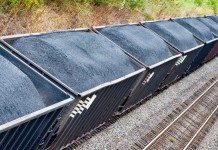
GLENCORE posted an interim attributable loss on Wednesday of $655m (2024: -$233m) owing to continuing slump in coal prices and disappointing copper output.
Mining earnings before interest, tax, depreciation and amortisation fell 17% to $3.8bn for the six months ended June while the marketing business reported a 8% year-on-year decline in ebitda. The outcome was group adjusted ebitda of $5.4bn – 14% lower than at the same time last year.
Funds from operations fell 22% $3.15bn. Cash generated consequently declined 14% to $4.3bn which saw net debt increase 30% to $14.5bn as of June 30. This represents an ebitda to net debt ratio of 1.08x.
Glencore announced last month it would reduce costs $1bn by the end of its 2026 financial year which roughly half in recurring cost savings delivered this year.
It also said it had booked $900m in income post period from the sale of its stake in agribusiness Viterra as well as a 16% stake in Viterra’s buyer, Bunge, which had a market value of $2.63bn.
Seeing as the Bunge stake was “surplus capital”, and given an expected lift in second half copper production, Glencore forecast an easing in balance sheet pressure with the net debt to ebitda ratio returning to 1x or lower.
The $1bn cost reduction programme is part of a broader operational review of Glencore’s industrial assets. The company has been dismantling its sprawling mix of assets over the years but more restructuring was to come.
“A comprehensive review of our industrial portfolio during the period has recognised opportunities to streamline our industrial operating structure, to optimise departmental management and reporting, and to support enhanced technical expertise and operational focus,” said Gary Nagle, CEO of Glencore in notes to the results.
Glencore said it would pay the second tranche of its a base dividend of $0.05 per share in September to which it would add ongoing proceeds from a $1bn share buy-back unveiled by the company in July. Total 2025 shareholder returns would increase to $3.2bn.
Nagle acknowledged there was “much uncertainty around the impacts of geopolitics and trade in the shorter-term”. But previous expectations of supply deficits were intact, he said, adding in a later conference call with analysts that the group’s marketing business hoped to benefit from heightened tariffs once there was more certainty on their long-term levels.
According to a report by the Financial Times, Glencore is set to retain its primary listing in London after assessing the benefits of moving it elsewhere, with New York as an option.
“London is where we are happy,” said Nagle. “We don’t believe there is a value-accretive proposition to move exchanges right now.”
Uncertainty about whether Glencore would be included in the S&P 500 index was “a big factor in our calculation”, Nagle is quoted as saying. The “significant” costs of moving the company’s listing were also a factor, said the newspaper.










